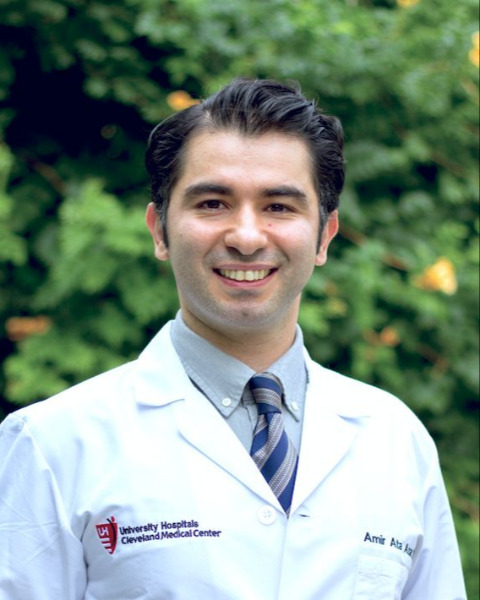SIR 2025
Men's Health
Scientific Session
Volume of embolized particles correlates with prostate gland volume in prostatic artery embolization

Nassir Rostambeigi, MD, MPH
Associate Professor
Washington University in St. Louis, United States- HN
Hannah Neiditz, BS
Medical Student
Washington University in St. Louis, United States 
Amir Ata Rahnemai, MD
Assistant Professor of Radiology
Washington University In St Louis, United States
Presenting Author(s)
Author/Co-author(s)
Prostatic artery embolization (PAE) is becoming a prominent treatment option for lower urinary tract symptoms due to benign prostatic hyperplasia, yet several aspects of embolization technique, including total embolized particle volume (EPV) remain uncertain. We aimed to test whether total particle volume to achieve adequate embolization can be estimated based on prostate gland volume.
Materials and Methods:
A retrospective review of a prospectively maintained PAE registry between July 2020-Dec 2023 was performed. Only PAE patients with successful bilateral PAE and adequate follow up data were included. Adequate embolization was defined by end point of stasis, which was confirmed by final 5-seconds length angiogram. PERFECTED technique was attempted when feasible. Clinical outcomes and adverse events were collected. Total EPV was correlated with prostate gland volume and analysis was classified based on particle size and whether bilateral PERFECTED technique was performed. P< 0.05 was considered significant.
Results:
A total of 219 patients, (mean age 72 ± 9 years) were included. Mean prostate volume was 137 ± 86 milliliters. Mean total EPV was 8.1% ± 3.2 of the prostate volume. Total EPV was 8%, 9%, and 8% of prostate volume among 100-300um, 300-500um and combination 100-300um+300-500um particle groups (p=0.045). EPV was not different if PERFECTED technique was used or not (8.2% vs. 7.6%, p=0.39). Prostate gland volume correlated with EPV (10.2% for prostate < 80mL, 7.3% for prostate >80mL). Significant negative trend was seen for EPV, with increased prostate gland volume (Spearman rank test, p< 0.001). 6 months after PAE, mean international prostate symptom score and quality of life, improved from 20.6 to 8.2 and 4 to 2 (p < 0.001), respectively. Total of 4 patients presented to emergency department 1-2 days after PAE for post-embolization syndrome. Post embolization syndrome was experienced between 3-10 days after procedure. No major adverse events, erectile dysfunction or skin changes/ulcerations were observed.
Conclusion:
EPV was estimated to be up to 10% of prostate gland volume to achieve the end point of stasis, resulting in significant clinical improvement, without major adverse events. With increased prostate gland volume there was a significant down-trend in required EPV.


.jpg)